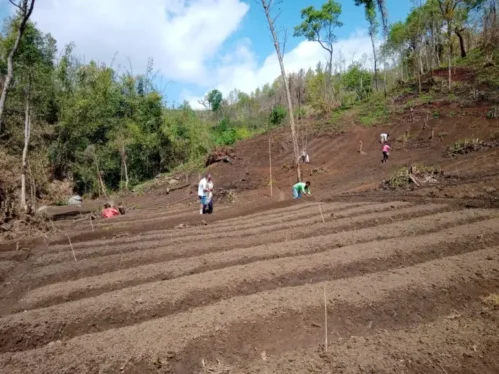- Your cart is empty
- Continue shopping
Confessions first. I am a chili lover and hoarder of hot chili powders and whole-dried chilies collected from across India, Bhutan, Thailand, and Sri Lanka. Like most Asians I take chili seriously, whether it’s Thailand’s famous Prik Kee Noo Suan (mouse dropping chili), Sri Lanka’s Nai Miris (Snake Chilli or Cobra Chilli) and Kochchi Miris or India’s 200 plus varieties including Guntur Sannam, Kashmiri Chilli, Ellachipur Sannam, Jwala, Bhoot Jholakia (Ghost Chilli), Dalle Khursani, King Chilly or the tiny and potent Bird’s Eye Chili widely grown across Nagaland, Meghalaya, Mizoram and Assam.
In a recent visit to North East India, I had the opportunity to meet biotechnologist Dr. Anuj Baruah (AKA Chilli Baruah) at his agricultural nursery and research center in Khetri, Assam. When asked about the Bhoot Jholakia (Ghost Chili) slipping the ranks in the list of the world’s hottest chilies, Baruah clarified, ‘Bhoot Jholakia remains the world’s spiciest original chilly. All other chilies from anywhere in the world that have beaten it in hotness in the league tables are hybrid varieties.’

Our tête-à-tête on the potency of chilies around the world and a tour of the nursery enlightened me on the role genetics (the DNA of the seed as well as of the planter) plays in the germination of Chilli seeds and the quality of the fruit of the plant. It left me curious to know more about the history of chilies in North East India. It was during this quest that I stumbled on fascinating tales about the Bird’s Eye Chilli i.e. Capsicum Frutescens.
Legend has it that Portuguese and Spanish colonists, missionaries and traders introduced the ‘Capsicum Frutescens’ in India, Africa and South East Asia in the 16thcentury. It is believed that back then, the Bird’s Eye Chili grew as a wild and neglected crop and adorned a few home gardens.
Over the years, Bird’s Eye Chili has been cultivated as a home crop across several states in North East India including Manipur, Nagaland, Assam, and Meghalaya and been used for household consumption as well as medicinal purposes. But in the past few years, North East India has grown and exported it commercially. A variant of this chili, ‘Kanthari Mulaku’ is also commercially grown in parts of Kerala and Karnataka.

Some say the Bird’s Eye Chili derives its name because of the physical similarities between the seeds of this chili and the eyes of a bird. Others explain that it came to be named so because birds widely dispersed its seeds across North East India.
Agriculturists believe that the Bird’s Eye Chilli got its name because birds are deeply attracted to the ripe fruit of the Capsicum Frutescens plant and love to eat it. So why would a bird want to eat the fruit of what is amongst the world’s top 10 hottest chilies (pungency level of (100,000–225,000 Scoville units)? No one knows.
But if ‘beauty lies in the eye of the beholder’ the connection between birds and this variety of chili cannot be denied. It is said that birds eat and digest ripe fruits from this chili plant without masticating. This keeps the seed intact. During digestion, the Bird’s body creates a benign environment to soften the hard seed coat thereby preparing it for germination. So when birds excrete the seeds they naturally disperse them in a ready-to-germinate state.
This begs the obvious question, will the Bird’s Eye Chilli seed not germinate if birds are not involved? The answer is yes they will but it will take longer and the probability of germination will be much lower. So how can a home gardener ensure that the Bird’s Eye Chilli seeds he or she is sowing stand a better chance to germinate?

According to Baruah, you can follow this simple procedure to increase the chances of the seeds:
- Give the seeds a temperature shock by leaving them refrigerator for 24 hours
- Take the seeds out and soak them in water for about 4 hours
- Wrap the seeds in a moist a muslin cloth for 4-5 days until you see the root breaking out of the seed coat
- Gently transfer the seeds that have roots to a pot. If the root breaks during transfer, your plant will not grow so be gentle and patient
Voila! Your Bird’s Eye Chili plant is now ready to be nourished and grown in a pot. Ensure that the plant receives ample sunlight. In a few months, your plant will bear bright red-fruit which you can safely consume. But that’s only if you get to it before the birds do.
IKAI Organic is a bulk seller of Organic Certified naturally grown and Organically Processed Bird’s Eye Chilli sourced from Umsophai Farms in Ri-Bhoi District in Meghalaya.


